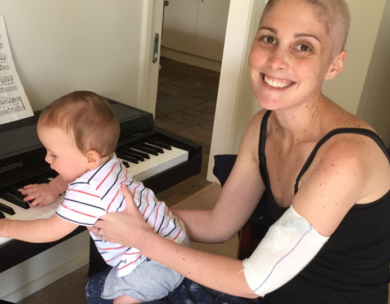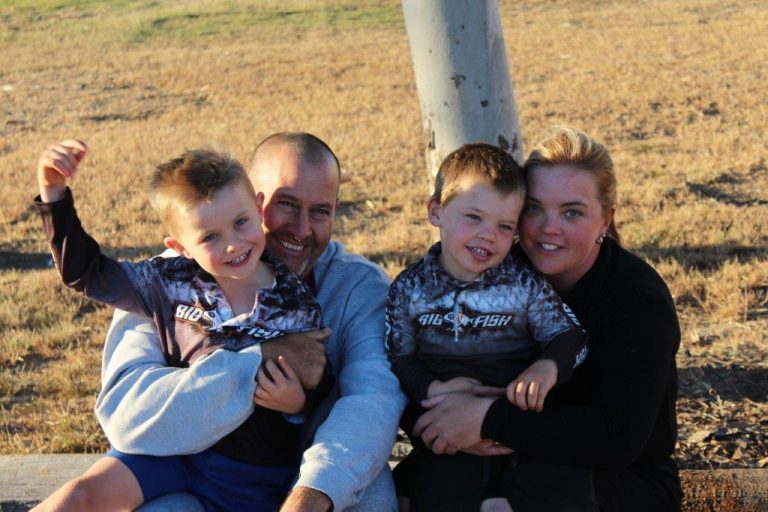AML is characterised by an overproduction of immature white blood cells, called myeloblasts or leukaemic blasts. These cells crowd the bone marrow, preventing it from making normal blood cells. They can also spill out into the bloodstream and circulate around the body. Due to their immaturity they are unable to function properly to prevent or fight infection. Inadequate numbers of red cells and platelets being made by the marrow can cause anaemia, easy bleeding, and/or bruising.
Acute myeloid leukaemia is sometimes called acute myelocytic, myelogenous or granulocytic leukaemia.
Acute myeloid leukaemia: the basics
Which type of AML do I have?
AML is classified into eight different subtypes based on the appearance of the leukaemic cells under the microscope. Each subtype provides information on the type of blood cell involved and the point at which it stopped maturing properly in the bone marrow. This is known as the French-American-British (FAB) classification system.
The current World Health Organisation’s classification system for AML uses additional information obtained from more specialised laboratory techniques, like genetic studies, to classify AML more precisely. This information also provides more reliable information regarding the likely course (prognosis), of a particular subtype of AML, and the best way to treat it.
Some subtypes of AML are associated with specific symptoms, for example, acute promyelocytic leukaemia (APML or M3) is associated with bleeding and abnormalities in blood clotting.
What is the prognosis of AML?
The most important factor in predicting prognosis in AML is the genetic make-up of the leukaemic cells. Certain cytogenetic changes are associated with a more favourable prognosis than others. This means that they are more likely to respond well to treatment, and may even be cured.
Favourable cytogenetic changes include: a translocation between chromosome 8 and 21 t(8;21), inversion of chromosome 16; inv(16) and a translocation between chromosome 15 and 17; t(15;17). This final change is found in AML subtype acute promyelocytic leukaemia (APML or M3). APML is treated differently to other types of AML, and usually has the best overall prognosis.
Other cytogenetic changes are associated with an average or intermediate prognosis, while others are associated with a poor, or unfavourable prognosis. It is important to note that in most cases of AML, neither ‘good’ nor ‘bad-risk’ cytogenetic changes are found. People with ‘normal’ cytogenetics are also regarded as having an average prognosis.
How common is AML?
Each year in Australia around 900 people are diagnosed with AML. Overall AML is rare disease, accounting for 0.8% of all cancers diagnosed, at a rate of 3.7 per 100,000 of population.
Who gets it?
AML can occur at any age but is more common in adults over the age of 60. Around 50 children (0-14 years) are diagnosed with AML in Australia each year. It occurs more frequently in males than females.
What causes AML?
In most cases the causes of AML remain largely unknown but it is thought to result from damage to one or more of the genes that normally control blood cell development. Research is going on all the time into possible causes of this damage and certain factors have been identified that may put some people at an increased risk. These include exposure to:
- very high doses of radiation, either accidentally (nuclear accident) or therapeutically (to treat other cancers)
- industrial chemicals like benzene, over a long period of time
- certain types of chemotherapy that treat other cancers
- some congenital disorders are associated with the development of AML, like Down’s syndrome, Bloom syndrome and Fanconi’s anaemia. In these cases the AML tends to develop in childhood or adolescence. In very rare cases, AML develops because an abnormal gene is passed down from one generation to the next.
- some people with pre-existing blood disorders including certain myelodysplastic syndromes (MDS) and myelofibrosis, aplastic anaemia and paroxysmal nocturnal haemoglobinuria have a higher than average risk of developing AML
- cancer-causing substances in tobacco smoke.
What are the symptoms of AML?
The main symptoms of AML are caused by a lack of normal blood cells. Because AML develops quickly people usually report feeling unwell for only a short period of time (days or weeks) before they are diagnosed. Common AML symptoms may include:
- anaemia due to a lack of red cells, causing persistent tiredness, dizziness, paleness, or shortness of breath when physically active
- frequent or repeated infections and slow healing due to a lack of normal white cells, especially neutrophils
- increased or unexplained bleeding or bruising, due to a very low platelet count
- bone pain, swollen lymph nodes (glands), swollen gums, chest pain and abdominal discomfort due to a swollen spleen or liver.
Occasionally people have no symptoms at all and AML is diagnosed during a routine blood test. Some of these symptoms described may also be seen in other illnesses, including viral infections, so it is important to see your doctor so that you can be examined and treated properly.


